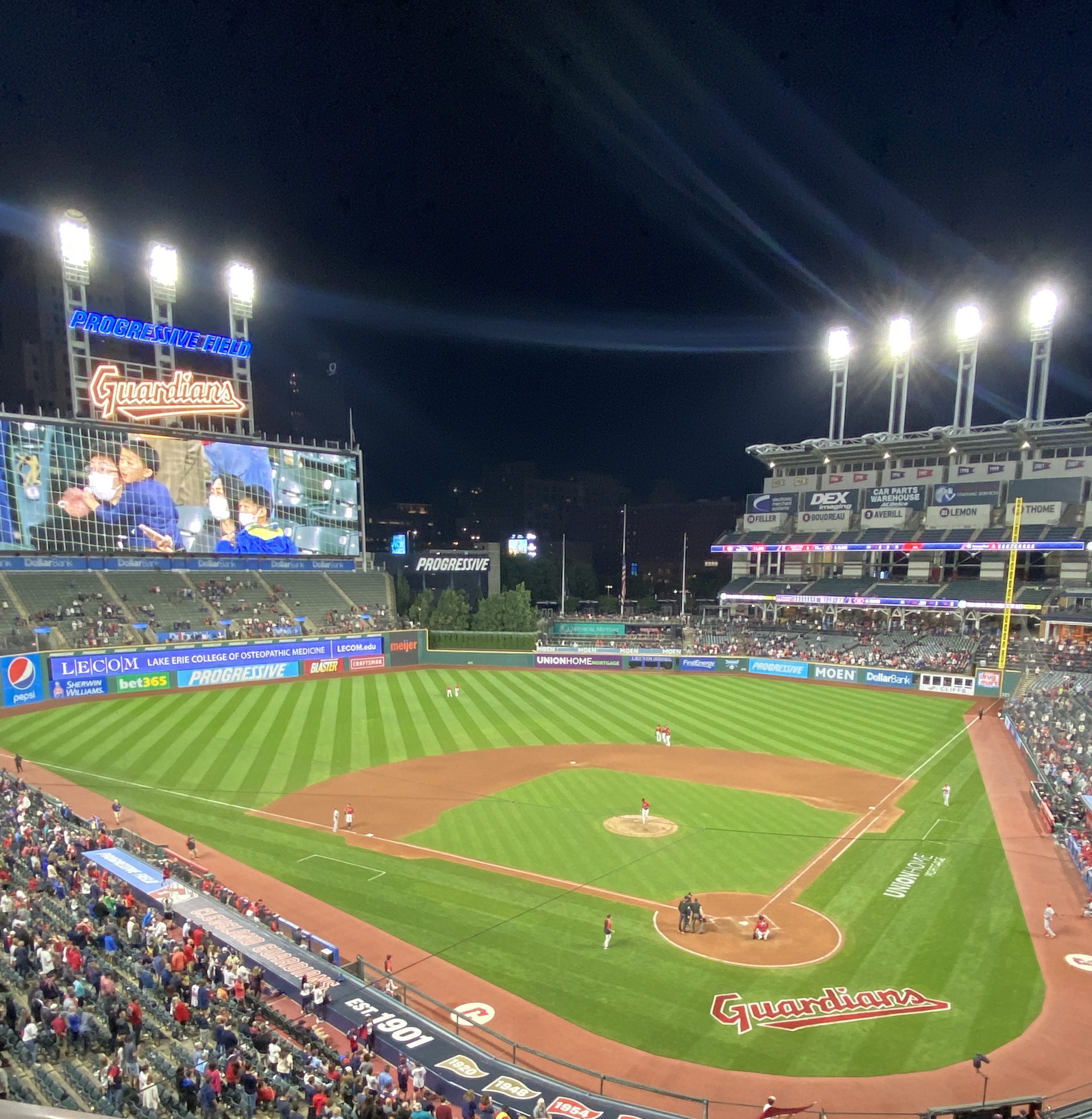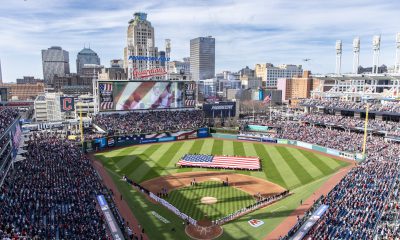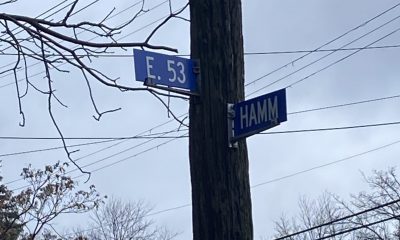
Cleveland, OH-
It’s been said that baseball is America’s Pastime. I honestly believe that, in fact, whining about the owner of your favorite MLB team is truly America’s Pastime. Fans see billionaire owners of small-market teams like Cleveland that could easily afford the large contracts handed out to star players like Aaron Judge, Carlos Correa, Jacob deGrom not only not sign them, but don’t even make an offer.
Fans clamor
Two franchises with the most vitriol towards ownership are the Guardians and the Twins. Readers in the Cleveland market don’t need a refresher about their “love” for Paul Dolan. Twins’ fans have an even worse affinity for the Pohlad family. Front office staff with the Twins are commonly known as “Pohlad Pocket Protectors” who have become savants at making free agent offers high enough to give the impression of legitimacy but are far short of what the market is for that player. Dolan is the 4th-richest owner in MLB at $4.6B; while Jim Pohlad is the 8th-richest owner at a meager $3.8B.
Diving into the building of contenders
This post will analyze revenues, payrolls, and markets of MLB teams. They will set the stage, hopefully, for a deeper understanding of how MLB owners approach building contending teams. Most of us are aware that large-market teams have financial advantages that mid- and small-market teams simply don’t have. Why is it, then, that a mid-market team like San Diego run up a payroll that runs perilously close (if not over) the luxury tax and be a playoff contender annually, while a similar mid-market team like Minnesota stumbles to compete? It is my hope that this post will go a long way towards answering those questions.
To set the stage, let’s look at MLB revenues and payroll per team:
| Team | Revenue | Payroll | % | Team | Revenue | Payroll | % | ||
| 1 | LAD | 565,000,000 | 285,508,333 | 50.53 | 16 | COL | 270,000,000 | 137,852,166 | 51.06 |
| 2 | NYY | 485,000,000 | 240,290,714 | 49.54 | 17 | MIL | 269,000,000 | 128,581,128 | 47.80 |
| 3 | BOS | 479,000,000 | 201,616,000 | 42.09 | 18t | MINN | 268,000,000 | 130,984,524 | 48.87 |
| 4 | ATL | 443,000,000 | 175,335,000 | 39.58 | 18t | DET | 268,000,000 | 128,640,000 | 48.00 |
| 5 | CHC | 425,000,000 | 141,810,000 | 33.37 | 20t | ARIZ | 267,000,000 | 77,393,333 | 28.99 |
| 6 | HOU | 388,000,000 | 171,639,599 | 44.24 | 20t |
CLEV |
267,000,000 | 57,710,000 | 21.61 |
| 7 | TEX | 387,000,000 | 134,961,333 | 34.87 | 22 | CIN | 266,000,000 | 113,580,000 | 42.70 |
| 8 | SF | 384,000,000 | 142,292,500 | 37.06 | 23 | KC | 263,000,000 | 84,610,000 | 32.17 |
| 9 | LAA | 331,000,000 | 187,613,094 | 56.68 | 24t | PITT | 258,000,000 | 38,575,000 | 14.95 |
| 10 | PHIL | 323,000,000 | 221,738,462 | 68.65 | 24t | CWS | 258,000,000 | 190,760,734 | 73.94 |
| 11 | WASH | 322,000,000 | 114,623,095 | 35.60 | 26 | TB | 252,000,000 | 75,347,813 | 29.90 |
| 12 | SEA | 313,000,000 | 92,745,714 | 29.63 | 27 | BAL | 251,000,000 | 41,421,166 | 16.50 |
| 13 | NYM | 302,000,000 | 255,919,999 | 84.74 | 28 | MIA | 240,000,000 | 79,500,000 | 33.13 |
| 14 | STL | 287,000,000 | 150,746,666 | 52.52 | 29 | TOR | 238,000,000 | 164,470,905 | 69.10 |
| 15 | SD | 282,000,000 | 202,172,618 | 71.69 | 30 | OAK | 208,000,000 | 32,548,334 | 15.65 |
A cursory review indicates the largest markets have the highest revenue. That’s not a surprise. Also, except for the income of the Los Angeles Dodgers and New York Yankees, the other 28 teams can finance their roster through existing revenue streams.
Then why doesn’t Paul Dolan (and Jim Pohlad) do that? Let’s take another look at the above statistics, but break it down by division:
| NL West | AL East | |||||||
| LAD | 565,000,000 | 285,508,333 | 50.53 | NYY | 485,000,000 | 240,290,714 | 49.54 | |
| SF | 384,000,000 | 142,292,500 | 37.06 | BOS | 479,000,000 | 201,616,000 | 42.09 | |
| SD | 282,000,000 | 202,172,618 | 71.69 | TB | 252,000,000 | 75,347,813 | 29.90 | |
| COL | 270,000,000 | 137,852,166 | 51.06 | BAL | 251,000,000 | 41,421,166 | 16.50 | |
| ARIZ | 267,000,000 | 77,393,333 | 28.99 | TOR | 238,000,000 | 164,470,905 | 69.10 | |
| NL East | AL West | |||||||
| ATL | 443,000,000 | 175,335,000 | 39.58 | HOU | 388,000,000 | 171,639,599 | 44.24 | |
| PHIL | 323,000,000 | 221,738,462 | 68.65 | TEX | 387,000,000 | 134,961,333 | 34.87 | |
| WASH | 322,000,000 | 114,623,095 | 35.60 | LAA | 331,000,000 | 187,613,094 | 56.68 | |
| NYM | 302,000,000 | 255,919,999 | 84.74 | SEA | 313,000,000 | 92,745,714 | 29.63 | |
| MIA | 240,000,000 | 79,500,000 | 33.13 | OAK | 208,000,000 | 32,548,334 | 15.65 | |
| NL Central | AL Central | |||||||
| CHC | 425,000,000 | 141,810,000 | 33.37 | MINN | 268,000,000 | 130,984,524 | 48.87 | |
| STL | 287,000,000 | 150,746,666 | 52.52 | DET | 268,000,000 | 128,640,000 | 48.00 | |
| MIL | 269,000,000 | 128,581,128 | 47.80 | CLEV | 267,000,000 | 57,710,000 | 21.61 | |
| CIN | 266,000,000 | 113,580,000 | 42.70 | KC | 263,000,000 | 84,610,000 | 32.17 | |
| PITT | 258,000,000 | 38,575,000 | 14.95 | CWS | 258,000,000 | 190,760,734 | 73.94 |
A clearer picture emerges when you look at revenues and payroll by division. One aspect that jumps out is the relative equal distribution of revenue in the AL Central. Teams in the AL Central rank 18th, 18th, 20th, 23rd, and 24th in revenue in MLB. Keep that in mind as I go through the rest of the data.
AL East:
Not a shock that the Yankees and Red Sox dwarf the rest of the division in revenue. It was a bit of a surprise that Tampa Bay generates more revenue that Toronto. Why does Toronto spend close to 70% of its revenues on payroll? Because in order to compete in the AL East, it simply has to. The Blue Jays are Canada’s team, with interest from Vancouver to Halifax. When Toronto plays in Seattle and Minnesota, a large contingent of Blue Jays fans attend the games. Toronto owner Ed Rogers is the 2nd-richest owner in MLB at $11.5B, which gives him the financial wherewithal to go deeper into the revenue stream to acquire players such as SP Chris Bassitt (3/$63M).
Tampa Bay is hamstrung by stadium location within the Tampa-St. Petersburg area, and Baltimore is pinched between two larger markets less than an hour away (Washington and Philadelphia). The Rays have always built from within, with a fantastic farm system and MLB scouts that can turn dust into diamonds. The Orioles are in the later stages of their rebuild, but ownership squabbles are creating issues going forward as to how to augment their home-grown talent with free agents. They will need to dig deeper into their revenue stream (similar to Toronto) if they want to be competitive in the Division.
AL West:
With the exception of Oakland, the other teams have revenues higher than any team in the AL Central. This is the Division with the Los Angeles Angels of Anaheim, who are the poster boys for ill-advised free agent spending. A payroll over 3 times as high as the Guardians resulted in (yet) another sub-.500 season for the Halos. When you combine high revenue with a minor-league feeder system the equal of the Guardians and the Rays, the result is the Houston Astros. Not many teams can lose the reigning Cy Young Award winner (Justin Verlander) and call it just another day at the office. Texas realized that before last off-season; between then and now, the Rangers have spent over $1B on player contracts. It’s tough to compete with Houston, but in order to do so the other teams in the Division need to dig deeper into their revenue streams.
NL East:
The Mets have the highest payroll and the 4th-highest revenue in the Division. Being Steve Cohen allows you to do that. Even so, Cohen is not tapping into his personal wealth (at $16B, Cohen is the richest owner in MLB) to do so. At 84.74% of revenues used for payroll, the Mets’ percentage is the highest in the sport. The Mets have to do this in order to compete on two levels. First, of course, is the Division. Atlanta brings in the most revenue in the NL East, and Philadelphia and Washington are not that much higher in revenue.
On another level, however, the Mets need to compete with the Yankees in the Battle of New York. Teams in multi-team areas (Cubs and White Sox, Dodgers and Angels) need to win the off-season in a way the Guardians and the Twins don’t. [That’s why the White Sox’ payroll is 1st in the AL Central, yet revenue is last.] Trust me, player agents like Scott Boras know this and use it to their clients’ advantage. Philadelphia spends close to 70% of revenues on payroll (MLB average is 42%). Revenues are lower than Atlanta, yet the Phillies need to spend in order to compete in the Division. Washington and Miami are in rebuild mode. Washington has already proven it can get back into contention; Miami, on the other hand, is hampered by placing the wrong bet on stadium location. Instead of Little Havana, the stadium should have been built on the waterfront or in the suburbs. Honestly, I don’t know how they will ever be able to compete for anything.
NL Central:
With the signing of Dansby Swanson, the Cubs have indicated they are ready to compete for a Division title. With by far the largest revenue stream in the NL Central, the Cubs can blow away St. Louis and Milwaukee and be Division champions for a long time. What gives the Cardinals and Brewers hope is that baseball matters a lot in St. Louis and Milwaukee. This gives their respective ownerships the flexibility to dig deeper into revenues than they already do (each team is above MLB average), as well as increase ticket prices without losing fans. Cincinnati and Pittsburgh are in full rebuild mode (although it seems like the Pirates are perpetually in rebuild mode). Each team will need to either emulate the Guardians/Rays model or dig deeper into revenues in order to compete against a well-financed Cubs organization.
NL West:
How are the Padres able to spend big money on free agents when their market area is so small? Yes, San Diego has locational disadvantages. With the Pacific Ocean to the west, the Vallecito Mountains and the Mojave Desert to the east, Mexico to the south, and the Los Angeles area to the north, there simply is no space for the San Diego area to expand and generate more revenues. Their revenue stream is dwarfed by the Dodgers and the Giants in the Division, as well as the Angels only a little more than an hour away. Padres’ ownership realizes that and has given the front office the latitude to dip into the revenue stream at close to 72%. If the Padres want to compete for a Division title, it needs to spend in a similar manner as the Dodgers and, after the Carlos Correa signing, like the Giants.
Arizona is in the final stages of its rebuild and will need to emulate the Padres in order to compete. Colorado is an enigma. Given the elevation of the stadium, the Rockies won’t ever sign a free agent starting pitcher, so it needs to develop its own (sound familiar?). Ideally, Rockies ownership will work with stadium design engineers to figure out a way to create an interior space that approximates the air density at 1000 feet elevation. Until then, in my opinion the team will remain in the MLB wilderness.
Blueprint to be competitive
A pattern emerged from analyzing the data from the 5 divisions other than the AL Central: Teams spend money on free agents in order to be competitive within their Division. Call it the price of admission.
The AL Central is perhaps the easiest of MLBs divisions to be competitive. The only “major market” team, the White Sox, is an afterthought outside of the South Side. In fact, the Chicagoland area is so skewed towards the Cubs that only they are considered to be a “major” market team; the White Sox operate in a mid-major market environment similar to Detroit and Minnesota. Kansas City and Cleveland operate as small market teams. Team revenues are remarkably similar.
It is futile to try to keep up with the large-market teams. There is simply not the revenue to compete with the New York and Los Angeles markets. (No, even Steve Cohen isn’t digging into his personal wealth to finance payroll). But is it possible to get more fans to attend games?
Fandom breakdown
One metric to use fan intensity is taking total attendance/population of metro area. This metric is used in the NHL to assess fan intensity to justify advertising revenues and broadcast rights fees. Below is a ranking of MLB fan intensity:
| Attendance | Metro Pop | % | Attendance | Metro Pop | % | ||||
| 1 | MIL | 2,412,420 | 1,575,179 | 153.15% | 16 | BAL | 1,368,367 | 2,800,053 | 48.87% |
| 2 | STL | 3,320,551 | 2,803,228 | 118.45% | 17 | OAK | 787,902 | 1,662,524 | 47.39% |
| 3 | SD | 2,991,470 | 3,338,330 | 89.61% | 18 | CHC | 2,616,780 | 5,881,890 | 44.49% |
| 4 | COL | 2,597,428 | 2,967,239 | 87.54% | 19 | TOR | 2,653,830 | 6,712,341 | 39.54% |
| 5 | LAA | 2,457,461 | 3,186,899 | 77.11% | 20 | HOU | 2,688,998 | 7,066,141 | 38.05% |
| 6 |
CLEV |
1,295,869 | 2,048,449 | 63.26% | 21 | PHIL | 2,276,736 | 6,102,434 | 37.31% |
| 7 | CIN | 1,395,770 | 2,221,208 | 62.84% | 22 | DET | 1,551,149 | 4,319,629 | 35.91% |
| 8 | KC | 1,277,986 | 2,157,990 | 59.22% | 23 | TB | 1,128,127 | 3,194,831 | 35.31% |
| 9 | SEA | 2,287,267 | 3,979,845 | 57.47% | 24 | WASH | 2,026,401 | 6,280,487 | 32.27% |
| 10 | CWS | 1,976,344 | 3,576,649 | 55.26% | 25 | ARIZ | 1,605,199 | 4,948,203 | 32.44% |
| 11 | PIT | 1,257,458 | 2,317,600 | 54.26% | 26 | NYM | 2,564,737 | 8,162,216 | 31.42% |
| 12 | BOS | 2,625,089 | 4,873,019 | 53.87% | 27 | NYY | 3,136,207 | 11,053,966 | 28.37% |
| 13 | ATL | 3,129,931 | 6,020,364 | 51.99% | 28 | TEX | 2,011,381 | 7,573,136 | 26.56% |
| 14 | MINN | 1,801,128 | 3,654,908 | 49.28% | 29 | LAD | 3,861,408 | 14,683,531 | 26.30% |
| 15 | SF | 2,482,686 | 5,059,939 | 49.07% | 30 | MIA | 907,487 | 6,166,488 | 14.72% |
Population disadvantages
This metric reveals the Guardians are attracting the 6th-highest percentage of fans, based on the Cleveland metropolitan area population. No doubt the Guardians’ race to the Division title had a lot to do with that. Note than the large-market teams typically are at the bottom of metrics like this. The Dodgers can capture around a quarter of their market and still outspend virtually every other team.
Not only does Cleveland have population disadvantages (29th of 30 teams in metro area population; only Milwaukee is smaller), but it also has some locational disadvantages. With Detroit 2 ½ hours to the west, Pittsburgh 2 ½ hours to the east, Lake Erie to the north, and Columbus 2 hours to the southeast, Cleveland’s hinterland area is small. This hampers the team’s ability to draw in out-of-towners to weekend home games. (Unlike Minnesota, which draws from outstate Minnesota, the Dakotas, western Wisconsin, and northern Iowa for weekend home games.)
Game attendance
Progressive Field, on average, fills up 46% of its seating inventory per game. While you’d think that spending more money on a better product would result in those seats being filled, there are two issues with that.
The first issue is that the unfilled seating inventory is almost all in the inexpensive seats. This is true throughout MLB. Next time you go to a game or see one on TV, look and see how many seats around the infield (the expensive seats) are empty. Then look at the outfield and 2nd and 3rd-level seats and see how many of those are empty. The ability to raise sufficient revenue from filling the $10 seats to be able to sign a Carlos Correa or a Justin Verlander simply isn’t there.
The second issue, to be blunt, is that ownership doesn’t have to do that. The Guardians won the Division. The Twins would have been right there with them if half the team weren’t on the IL. Neither team needs to sign big-money free agents in order to compete in this Division.
Teams in the AL Central have the luxury of seeing how the season unfolds and make trades before the deadline to address any inefficiencies. The Guardians never thought the team would be competitive in 2022; the fact that they were was a lot like playing with house money. They stood pat and were vindicated by the decision. The Twins, on the other hand, went all in for a Division title. Injuries made that a futile mission; the team after Memorial Day had a record similar to Detroit and Kansas City.
Team ownership decisions
In conclusion, I hope this information gives the reader some basis for the decisions made by MLB owners. Their first priority is winning their Division, not the World Series. Team owners in the AL Central do not have the pressure of high-revenue competition within the Division. This allows them to be discerning on free-agent acquisitions, see how the season unfolds, and make strategic additions at the trade deadline.
Finally, I would say to Guardians fans that if you want Paul Dolan to spend money on high-end free agents, the best path to that is to switch Divisions with Tampa Bay (which is actually farther west than Cleveland). If the Guardians were required to compete financially with the Yankees and Red Sox, Dolan would be forced to dip deeper into the team’s revenue stream.
I’m not certain the end result would satisfy the fan base.
















Michael Sprague
February 16, 2023 at 9:33 pm
Except Dolan isn’t worth that much because he isn’t his uncle
Chuck Rusinek
June 27, 2023 at 12:58 pm
your numbers are a bit flawed. you should be looking at the tv market size, which for cleveland includes akron and canton. further, you could look at the size of each teams regional sports market. which for cleveland includes columbus, toledo and into erie, pa. where do their fans come from? how far do they travel to see the teams? all of the cleveland teams seem to be regional. not many people within the city can afford to go to a game. also – where does the teams revenue come from? you say cleveland earns $267 mill in revenue, but where does it come from? what is the disparity? why arent the dolans spending more in relation to revenue? i know baseball doesnt want a salary cap, but what about a salary floor? payroll should be a minimum percentage of revenue, like say a third to 2/5.